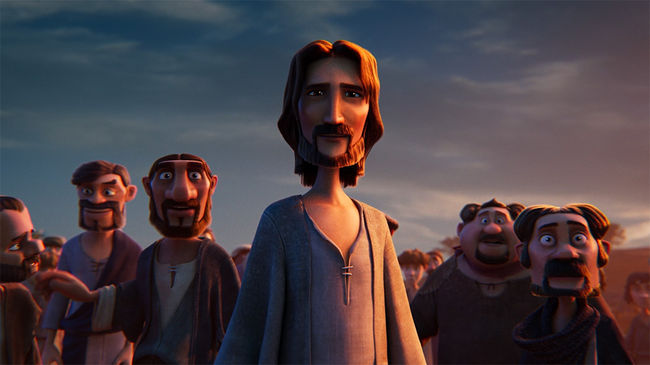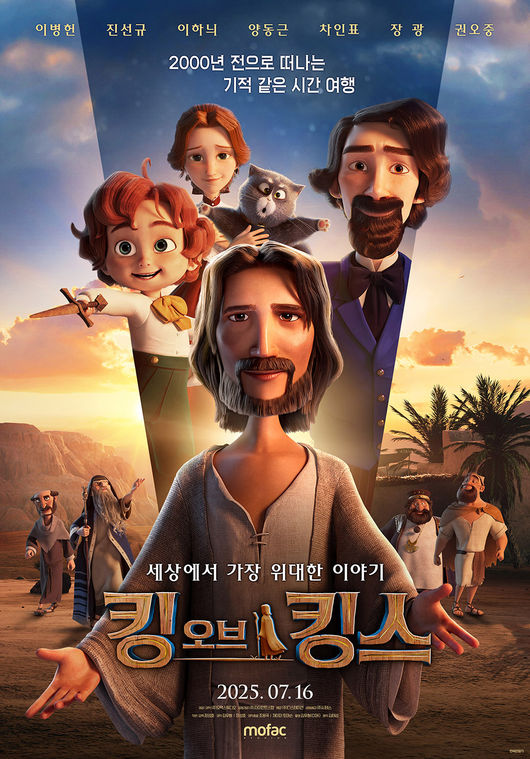[OSENWORLD] Korean animated feature The King of Kings, directed by Jang Sung-ho, has stunned North America—earning an A+ CinemaScore, a 98% Audience Score on Rotten Tomatoes, and over $60 million in box office revenue. This record-breaking K-animation now holds the title of the highest-grossing Korean film ever in North America. Ahead of its Korean theatrical release this July, the film reveals the top three reasons behind its global success.
#1. Star-Powered with a Purpose — “I felt a great responsibility,” says Oscar Isaac
Set in a reimagined journey where iconic British novelist Charles Dickens and his youngest son Walter travel through the life of Jesus 2,000 years ago, The King of Kings attracted a heavyweight Hollywood cast.

Kenneth Branagh (Oppenheimer, Murder on the Orient Express) voices Charles Dickens and called it “an honor” to be part of a story that “speaks to humanity and family.” Oscar Isaac (Dune) takes on the role of Jesus, sharing, “Messages of forgiveness, love, and sacrifice transcend time and culture—I felt a deep responsibility joining this film.”
Uma Thurman portrays both Catherine Dickens and Mary, stating, “Dickens’ warmth and love for his family permeate this film. I wanted to help pass that on to children and families.” Pierce Brosnan (James Bond series), who voices Pontius Pilate, noted the story’s universal reach: “It’s meaningful to retell a timeless story in a new way.”
Also featured are Forest Whitaker (Black Panther) as Peter, Mark Hamill (Star Wars) as King Herod, Ben Kingsley (Iron Man 3) as the High Priest, and rounding out the cast is Roman Griffin Davis (Jojo Rabbit) as Walter Dickens.

#2. A Fresh Lens on a Timeless Story — “I wanted to show this 2,000-year-old message is still alive today”
The screenplay for The King of Kings is inspired by Charles Dickens’ little-known Christmas short story The Life of Our Lord, originally written for his children. Director Jang Sung-ho built on this to create a unique “father-son time travel” narrative, imagining Dickens and Walter witnessing the life of Jesus firsthand.
This creative approach humanizes the spiritual epic, grounding it in an intimate family dynamic. “Through the eyes of Charles and Walter Dickens, I wanted to show that this ancient message is still powerfully relevant today,” Jang explained.

#3. Visually Original and Boldly Korean — “Unique, special, and impossible to look away from”
The King of Kings reinterprets the life of Jesus with a distinctly Korean aesthetic. Rejecting Hollywood and Japanese animation norms, the production team crafted original designs blending Korean cartoon styles with symbolic visual contrasts.
Characters from the present-day Dickens family are drawn in a contemporary Korean cartoon style, while biblical figures—like Jesus, a carpenter—are stylized like wooden figurines. Meanwhile, antagonists such as Herod and the High Priest are exaggerated in caricatured forms, creating dynamic visual tension.
On the technical front, the film pushes boundaries. With a self-developed virtual production platform and real-time digital tools, the team brought live-action cinematography techniques into animation—achieving precision in movement, fluid editing, and flexible reshoots.
Epoch Times praised the film as “a masterpiece of visual innovation—unique, special, and impossible to look away from.”
With a powerful, universal story, A-list talent, and an unapologetically Korean production identity, The King of Kings has become a landmark in global animation. The Korean release, featuring voice talents like Lee Byung-hun, Jin Sun-kyu, and Lee Hanee, hits theaters nationwide this July.
/k_inside@osen.co.kr













